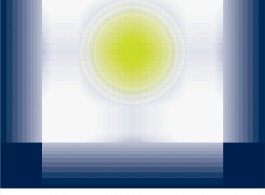How do we form judgments about art? Obviously this is a difficult question on which to reach a consensus. If we are to judge whether a work of art is part of what is commonly regarded the canon of art history, we cannot ignore a very important group of participants who play an integral role in the constitution of art history – collectors. It is these patrons who have selected and preserved the art that is visible for us today. At all times, collectors thus have been crucially involved in shaping the landscape of art history.
Pale Fire opts to give a voice to this group. Rather than concentrating on artists or art works as the exhibition thread, Pale Fire brings together a group of young collectors in order to show their collections as a representation of a new generation with new cultural aspirations. Having grown up in the era of globalization, the experiences of this new generation across geographical, racial, gender, and many other borders have informed the collections that are at the core of this exhibition. Just as the era of globalization can be compared to a complex patchwork or artistic landscape, the collections represented in Pale Fire too highlight the international, and speak for a cultural diversification that reflect personal experiences. In this exhibition, the existing rules have been put aside, when young artists and internationally recognized ones are placed on the same platform on the basis of the individual judgment alone. Pale Fire thus returns to the art itself and the times of judgment; but this judgment is also about the future.
Pale Fire thus can be judged bleak in terms of meaning and could be compared to the moon that will absorb the rays of the sun without ever also adopting its heat. Sign of irony, Nabokov had borrowed Shakespeare’s symbol for his novel of the same name to describe his satirical moon-like hero. However, to understand the exhibition from a historical point of view, Pale Fire demonstrates new meaning. Nabokov’s use of liberated creative structures revolutionized the concept of the novel, and widened the road for fiction writing in the future. In this light, the exhibition is not only a show of private collections with an internationally oriented collection concept, but an attempt to break the Chinese contemporary art collection out of its initial orders and borders, and to open it up to new possibilities and “ways.”
- Venue
- M WOODS(木木美术馆)
- Date
- 2014.10.10 Fri - 2015.01.10 Sat
- Opening Exhibition
- 10/10/2014 18:00
- Address
- 北京市朝阳区酒仙桥路2号798艺术区2号院D-06 D-06,798 Art Zone No.2 Jiuxianqiao RD. Chaoyang District, Beijing, China 100015
- Telephone
- +86 10 83123450
- Opening Hours
- Tuesday – Sunday, 10.30am – 6.00pm(星期二至星期日 10:30am - 6:00pm)
- Director
- Presca Ahn
- info@mwoods.org
Pale Fire: Revising Boundaries
[Press Release]



